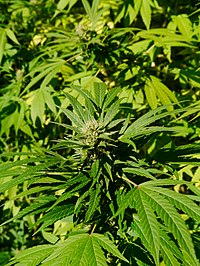
Tea aroma formation from six model manufacturing processes.
Sign Up to like & getrecommendations! Published in 2019 at "Food chemistry"
DOI: 10.1016/j.foodchem.2019.01.174
Abstract: Tea aroma is determined by the nature of the plant, the production processes, and many other factors influencing its formation and release. The objective of this study was to investigate the impact of manufacturing processes… read more here.
Keywords: processes tea; manufacturing processes; formation; tea ... See more keywords

Preparation of Tea Aroma Precursor Glycosides: An Efficient and Sustainable Approach via Chemical Glycosidation.
Sign Up to like & getrecommendations! Published in 2022 at "Journal of agricultural and food chemistry"
DOI: 10.1021/acs.jafc.1c07043
Abstract: Tea aroma precursor glycosides are plant-derived natural products with great economic value. However, the preparation of these glycosides remains largely overlooked in the past decades. Herein, we report a mild, efficient, and sustainable chemocatalytic procedure… read more here.
Keywords: aroma precursor; precursor glycosides; tea aroma;

Determination of Tea Aroma Precursor Glycosides: An Efficient Approach via Liquid Chromatography-Tandem Mass Spectrometry.
Sign Up to like & getrecommendations! Published in 2023 at "Journal of agricultural and food chemistry"
DOI: 10.1021/acs.jafc.2c08562
Abstract: Tea aroma components are often stored as glycosidically bound forms in the tea plant (Camellia sinensis). However, the determination of these glycosides in tea samples is far from optimal. In the present study, we developed… read more here.
Keywords: aroma glycosides; tea aroma; liquid chromatography; aroma ... See more keywords

Optimization of Electronic Nose Sensor Array for Tea Aroma Detecting Based on Correlation Coefficient and Cluster Analysis
Sign Up to like & getrecommendations! Published in 2021 at "Chemosensors"
DOI: 10.3390/chemosensors9090266
Abstract: The electronic nose system is widely used in tea aroma detecting, and the sensor array plays a fundamental role for obtaining good results. Here, a sensor array optimization (SAO) method based on correlation coefficient and… read more here.
Keywords: analysis; electronic nose; sensor array; tea ... See more keywords